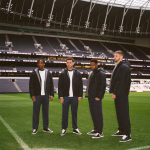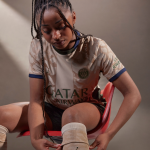
3 brands that did not make it
Brands that have not succeeded in creating such a strong heritage that they have established themselves
March 13th, 2022
They have dressed great sports champions, but this has not been enough to keep them in the small circle of the brands that count. Despite the fact that their logos have been pinned on the shirts worn by football legends, accompanying them in their sporting exploits, they have not managed to create such a strong heritage as to impose themselves on the Italian and then European scene. Brands that, despite the great proclamations, exceptional testimonials and great jerseys, after a few years have vanished into thin air, leaving only a tepid memory. An inevitable cycle, which in Italy is constantly fed by the constellations of amateur, semi-professional clubs and football schools. Indeed, we have seen almost always new brands in Serie A, some taking over from others very slowly, such as Givova who soon took over all the clubs sponsored by Legea. It is impossible not to mention the leading role played by Kappa and Macron, who have replaced Lotto, Erreà and Mass over the years.
Although these brands have slowly disappeared, leaving a huge void, we at nss sports have never completely forgotten Sportika, Warrior and Kronos. Technical sponsors who dressed great clubs and great players and then stopped making football kits for professional clubs.
Sportika
The company, founded by Carlo Crosio in 1982 in Ovada, in the upper Monferrato region of Piedmont, has always made sports kits for a variety of disciplines but had never before been involved in the sponsorship of top-flight football teams in Italy. In 2009, however, when it began its partnership with Sassuolo, Sportika found itself making shirts for one of the fastest growing teams in the Italian cadet league. Sassuolo, of course, is one of the most successful teams on the Italian cadet scene. The team's rare ability to create a winning cycle has seen it reach Serie A with full merit. Sassuolo's rise from C1 to Serie A has been accompanied by the jerseys made by Sportika, who have always chosen very simple templates with the colours green and black on the first jersey, while for the away jersey they have often chosen single-colour suits in white or green with contrasting details.
A defensive strategy that didn't pay off in the long run, since when it came time to create the first, historic jersey worn by Sassuolo in Serie A Sportika roughly adapted those from the previous season. The brand logo is carried from the left side to the centre aligning the Sassuolo crest on the right, the Serie A patch applied on the right sleeve and the white font used for the text and number parts is the same as the previous season. Eusebio di Francesco's boys achieved a hard-fought salvation, and the following year they played their last season in Sportika shirts, which did not make any major changes to those previously used, only adding gold lettering details and moving the technical sponsor's logo back to the side. Too little for a team that was growing in results and prestige, who chose to part ways with Sportika and partner with a more experienced kit brand like Kappa, a partnership that lasted for five seasons after which Sassuolo switched to PUMA. In the meantime, Sportika has continued to produce some jerseys for teams in lower categories, such as Reggiana, UC Sinalunghese or ASD Grassina, or outside Italy such as Ayia Napa in Cyprus and markets such as Albania.
Kronos
Another brand that has been linked to a cavalcade of promotions up to Serie A, but which has left a better memory through its shirts, is Kronos, which accompanied Venezia FC's rise to the top flight at the end of the last millennium. Founded in 1979, the Vicenza-based company first came to prominence not in football but in basketball when it made a game shoe for the late Drazen Petrovic during his time with Real Madrid. The arrival in the lagoon is instead linked to Mestre FC, which chose him as its 1987 technical sponsor. It was to be a partnership because in the summer, with the arrival of Maurizio Zamparini, the mainland team would merge with their neighbours Venezia, who would be dressed by Diadora. But when the team in the 1997-98 season made its return to Serie A after an absence of more than thirty years, the Venetian company was given the honour of designing the jersey.
The result exceeded expectations, with kits that are still an object of veneration in the lagoon today. The first jerseys, made immortal by Alvaro Recoba's dead-leaf free kicks, arrived in January on loan from Inter and the author of an unhoped-for salvation, featured a V-neck and a Venetian lion on the left side made of green, yellow and orange that stood out against the black back of the jersey. The following year Kronos presented a jersey that was controversial: the base was emerald green, with black stripes with orange outlines, too little for the fans and so Kronos was forced to change in a hurry, opting for the insertion of two orange stripes of the same size as the green ones and the black central one. The season was very disappointing and ended with a bitter relegation, immediately avenged the following year with Prandelli on the bench. For the cadet series Kronos used a templete with horizontal bands of different size and colour that would become a classic Venezia jersey, but with a curious orange-edged arch dividing the collar and sleeves. Kronos could not rejoice in the promotion because it was replaced by Kelme and he left the world of football, after he had also made customised boots for Hristo Stoichkov, Abel Balbo and Gabriel Omar Batistuta.
Warrior
When in 2012 Liverpool chose to leave adidas after only six years many were surprised, but no one could have imagined that the Reds would sign with Warrior, a brand unknown in the world of football. Up until that point, the brand, which specialises in ice hockey and lacrosse, had not yet produced a kit for a professional team and its first contract was with one of Europe's most prestigious teams. The desire to immerse itself in the world of football probably came at the urging of New Balance, which in 2007 had incorporated the Warrior group, perhaps planning its current rise in the world of football itself years before. Today, the William Riley-founded brand plays a major role in football, sponsoring teams such as Porto, Roma and Bilbao, and has been the kit supplier to the Reds for five years, taking over from Warrior.
As we said, it all began in 2012 in the city of the Beatles with a massive £25million bid over six years - a deal that was among the most lucrative in the industry at the time. Warrior decided to play it safe by dusting off the Liver Bird with the letters LFC, a crest used on shirts in the 1970s and 1980s and still present today. The other major change they made to the home kit was to not include any white elements, the first and only time this has happened in Liverpool's history. But Warrior's exploit came in the following season, when in addition to offering unique kits for Liverpool inspired by those created by Umbro in the early 80s, the brand founded by David Morrow surprised everyone by becoming technical supplier of Sevilla.
In those years the Andalusian club was experiencing one of its best sporting moments outside of Europe, so much so that in 2014 it gave Warrior its first important success with the victory in the Europa League. Unfortunately, in his first year in Sevilla, Warrior was unable to replicate what he had done with Liverpool, the brand distorting the first jersey by adding a vertical stripe to the classic white uniform, used by the Andalusians only on rare occasions. The European victory with Sevilla, however, allowed Warrior to make a name for itself, expanding its boundaries even further, arriving in Portugal with Porto and then touching on the dream of dressing Roma, who in those years were undecided whether to continue with the path of self-production or rely on a technical sponsor. But in the very year that Warrior was seeing its popularity, profits and club sponsorship rise, the group decided to take a different route, kick-starting the rise of New Balance, which replaced Warrior the following season.



































